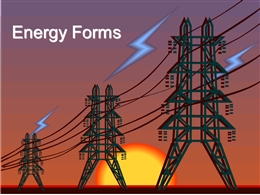Learn more how to embed presentation in WordPress
Copy and paste the code below into your blog post or website
Copy URL
Embed into WordPress (learn more)
Comments
comments powered by DisqusPresentation Slides & Transcript
Presentation Slides & Transcript
Renewable Energy Sourcescomposed byPawan Saini
In the last 100 years, the Earth warmed up by ~1° C100 years is nothing by geological time scales!
Climate change due to natural causes (solar variations, volcanoes, etc.)Can we predict the past?
CO2 Concentration, Temperature, and Sea LevelContinue to Rise Long after Emissions are Reduced100 years1,000 yearsSea-level rise due to ice melting: several millenniaSea-level rise due to thermal expansion: centuries to millenniaTemperature stabilization:a few centuriesCO2 stabilization:100 to 300 yearsCO2 emissionsCO2 emissions peak0 to 100 yearsToday
The possibility / likelihood of global warming is disturbing …… but there may be a bigger problem!Chu
Consumption of Energy Increased by 85% Between 1970 and 1999By 2020, Consumption will Triple
World production of oil and gas is predicted to peak within 10 - 40 years
Energy conservation and efficiency can buy time(a factor of ~2) but the fundamental problem remains
Electrical generationSwitch from petroleum to coal and natural gasWhy has hydroelectric declined?When did nuclear go up?
Numbers = how long it would last if all energy came from one sourceResource recoverable recoverable and hoped forCoal 125 1300Petroleum 5 50?Natural gas 5 50?Oil shale 0 2500Conventional reactors 3 15Breeder reactors 115 750Fusion 106 to 109Geothermal surface 0.2 60 deep rock 0 600Estimates of depletable energy resources in the U.S.
Numbers = proportion of current U.S. energy needs that could be supplied for an indefinite period. Tidal energy 0.1 Organic Waste 0.1 Photosynthesis 0.23 Hydropower 0.14 Wind Power 5 Solar radiation 740Estimates of renewable energy
(in the U.S. in 2002)1-4 ¢2.3-5.0 ¢6-8 ¢5-7 ¢Today: Production Cost of Electricity6-7 ¢25-50 ¢Cost, ¢/kW-hr Courtesy Nate Lewis
Energy CostsBrazilEurope$0.05/kW-hrwww.undp.org/seed/eap/activities/weaCourtesy Nate Lewis
Potential Sources of Energy when Fossil Fuels Run OutMagnetic Plasma Confinement,Inertial FusionWaste &Nuclear Proliferation Nuclear Fusion10 TW = 10,000 new 1 GW reactors: i.e., a new reactor every other day for the next 50 years
Solar, Wind and WaterWe do not know how to store electrical energy on a massive scale
GeothermalHeat near surface of the earth = geysers, volcanoes, hot springs
PhotosynthesisPhotovoltaic andelectricity to chemicalH OOH222scMesceMCOSugarH OO222Solar to Chemical EnergySemiconductor/liquid junctions
Energy gained in corn ethanol production
Total CO2 emissions
From Summary of Renewable Fuel Options (NCEP)“Unlike corn ethanol, cellulosic ethanol has potential to achieve near-zero net carbon emissions. Cultivation of cellulosic feedstocks requires very low energy inputs and, if sustainably managed, the carbon released during fuel combustion is reabsorbed by the growth of new feedstocks.”
Use heat to make steam to turn turbine for electrical generationNote: deep hot waters are corrosive to best to inject clean water in a closed system and bring it back to the surface as steam.Geothermal Energy in More Details
In U.S., much done on public land = cheapVery little potential in east and mid west
World wide distribution of volcanos, hot springs, etc.Japan, Iceland,New Zealand big users of geothermal.
Although hot areas near surface are limited, the earth is hot everywhere if you go down far enough.
Bright idea!? – drill deep enough to find heat. Since rock is a poor conductor of heat, set off a big bomb to crack the rock and allow heat to move – then pump down water to make steam.
Hydropower in More Details
Hydropower = damsNot much used in world, why??
Norway, Zambia, Ghana big users
Most unused hydropower in U.S. = Alaska, In World = Canada, Russia
Problems with hydroelectricLocation = unused rivers are in extreme north or low population areasCompetition with recreational uses (U.S.) and environmental concernsHard to build dams in populated river valleysSiltation of dams – limited life.
Tidal PowerIn areas of large tidesAnywhere – build offshore dam
Highest tides in the world = Bay of Fundy 16 meters = 48+ feet!
Tidal power anywhereNo dam – but a turbine.Problems:CorrosionNavigationAppearanceAmount of energy available is lowBest tides are near poles – away from people.
Banning PassWind Power in More Details
Wind Power Generation
Best wind location = Aleutian Islands, why no wind development there?
Best U.S. localitiesMidwest, mountainsAnd coastal areas.
Netherlands = coastal development
England = off shore
Wind energy problemsLocation – near population centerBird migration – VisualMust be coupled with other sources of electricity (intermittent supply)
Solar Energy in More Details1. Solar Thermal
At focal point = heat liquid – steam to turn turbine
Solar Resource for a Concentrating Collector
Big Plants
2. Solar Photovoltaics
‘hard’ vs ‘soft’ energy pathsHard =Big plantsCentralized productionSoft = Decentralized units per household
Big Plants
Energy efficient house; wind power on roof. Solar panels for heat and electricity.Decentralized
Solar electricity generation
Solar water heating solar air heating
Solar house problemsThe Los Angeles air = smogRetrofitting- very expensiveHard for big hotels, Walmarts, etc.
Solar house economicsAdd $16,000 to price of housePay back - $1500 per year in energy costs15 years to break evenFederal tax incentive; 40% of investment can be written off. Discontinued in 1986City of Claremont – solar energy ordinance. 60% of hot water – solarExceptions for equivalent savings of energy = Colleges approach. Why not trust solar?








